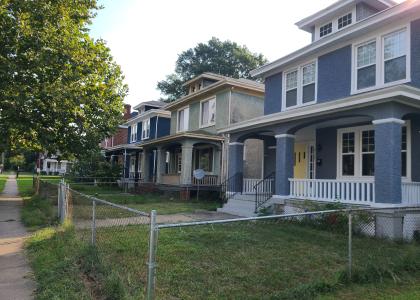As 2020 candidates craft their campaign platforms, new data show that energy affordability is a major problem in the United States. In fact, about one-fourth of all Americans and more than two-thirds of low-income households live with a high energy burden.
Energy burdens—the share of income spent on energy bills—can have serious impacts. Households with high burdens (those spending more than 6% of annual household income on energy bills) are often linked with respiratory health problems, increased stress, utility disconnections, and the perpetuation of poverty.
ACEEE analyzed newly available data to provide a national snapshot of energy affordability. According to the US Census’s 2017 American Housing Survey data (using the same methodology as our 2018 energy burden report), we find the following groups experience high energy burdens nationally:
- 67% of low-income households (200% of federal poverty level)
- 36% of African American households
- 34% of elderly households (age 65+)
- 29% of renting households
- 27% of Latinx households
- 24% of all US households
Other households fare better. By comparison, 22.5% of white households, 21% of non-renting households, 20% of non-elderly households, and 5% of non-low-income households experience high energy burdens. Low-income households experience high energy burdens almost three times higher than that of the average household and 13 times higher than that of households that are not low-income.
ACEEE’s new policy brief on energy affordability includes information about national, urban, and rural energy burdens. In 2016, ACEEE conducted a study on urban energy burdens. We found that low-income households in 48 of the largest US cities experienced energy burdens that were three times as high as households that were not low-income. The study also found that communities of color, renters, and multifamily households experienced higher burdens than the average household.
Findings from ACEEE’s 2016 urban energy burden study, aceee.org/research-report/u1602
In 2018, ACEEE published a second energy burden study, this one focused on rural areas. It told a similar story. Low-income, elderly, non-white, renter, manufactured housing, and multifamily households all experienced higher burdens than the average household across rural regions.
Findings from ACEEE’s 2018 rural energy burden study, aceee.org/research-report/u1806
Energy efficiency can offer a long-term solution to high energy burdens. It helps households reduce their energy usage with measures such as weatherization, efficient appliances, and behavior change. If political candidates are interested in addressing energy affordability, they can support policies that improve and expand federal, state, and utility-funded low-income energy efficiency and weatherization programs.
All Americans have the right to affordable energy bills and comfortable homes. The 2020 election offers a great opportunity for candidates and policymakers to ramp up efforts to help make this a reality.
Stay tuned for an updated ACEEE Urban Energy Burden report, which will provide the latest data on energy burdens in cities across the country and research on how community-led organizations can lead on energy affordability and energy efficiency.
For more information on ACEEE’s energy burden research, visit or low-income programs topic page.






